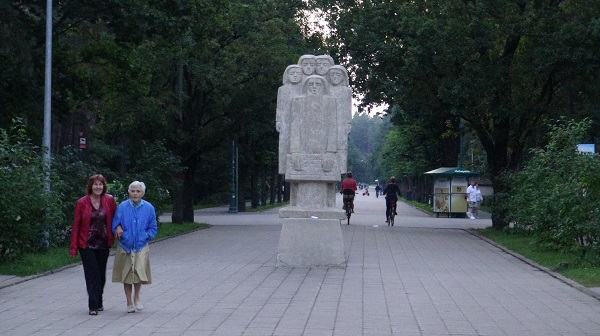Lauded as one of the first „garden cities“, Mežaparks is a district of picturesque art nouveau villas standing amidst lakeside forest. Once they housed the German elite of the city.

After the Soviet 1940 many became derelict, but after 1990 they were repaired as the possibility to own a large home both in nature and not far from downtown appealed to modern-day Latvian businessmen.
The main Kokneses street looks like its in a city, but one has just to turn to side streets such as Hamburgas or Lībekas and Mežaparks begins to seem like a forest with houses built here and there. Entire Mežaparks district is built against a massive park where many gigs and events take place. It is the most famous for its Song festival ground where the UNESCO-inscribed events of tens of thousands singing Latvian songs are held every 5 years.

In addition to this “garden city”, Mežaparks surroundings has three additional very different „green areas“: the Riga zoo (opened 1912, the oldest in Northern Europe), Latvia‘s first 18-hole golf course, a massive cemetery, most famous for its stately and vast interwar memorial for Latvian troops who died in wars of independence.

Another “green area” is further to the east of Mežaparks itself. It is the Riga skansen (ethnographic open-air museum) where old wooden 18th-19th century buildings have been brought in from all over Latvia. A forested park now includes huts, churches of multiple denominations, mills, warehouses, barns and other authentic utility buildings. Some have internal exhibits and others have handicraft shops but generally outside festivals the museum is quite static, best suited for a leisurely walk through its large 87 ha territory. The museum was established in the interwar period when the lifestyle presented was still alive – and has been continuously expanded ever since.

Population: 5 000
